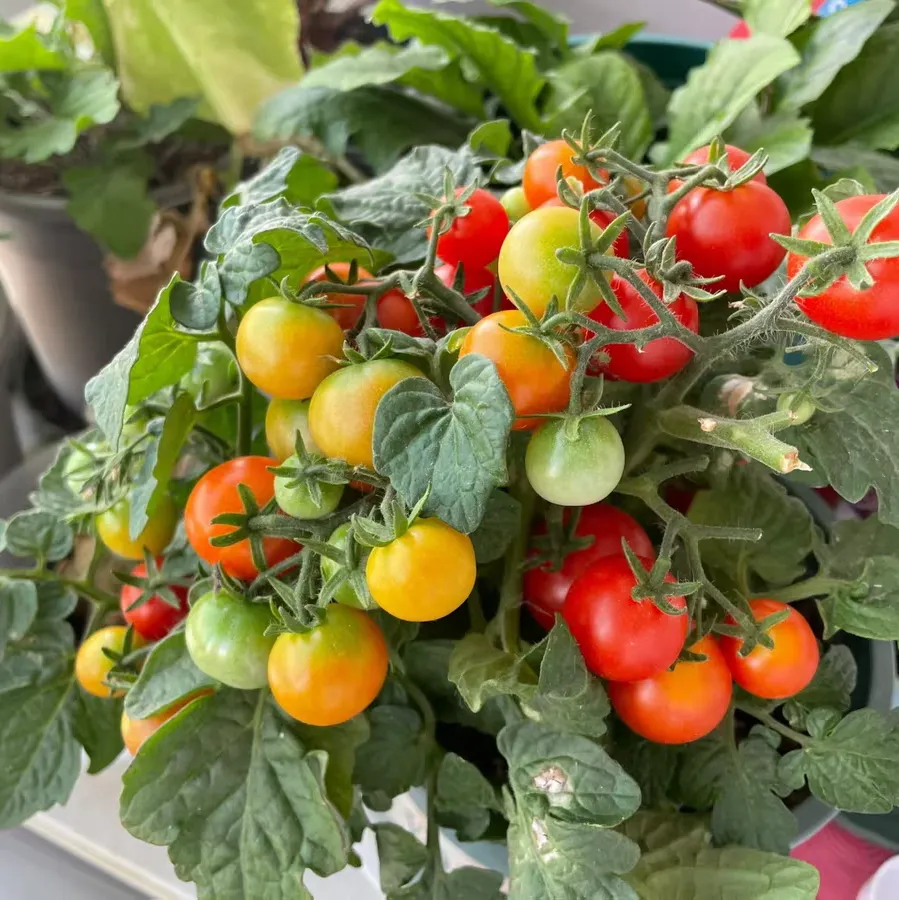Having trouble growing vigorous tomato seedlings at home with low fruit yield? Today, learn how to grow tomatoes that hang heavy on the branches and achieve tomato self-sufficiency.
### **Step 1: Choose the Right Variety**
- **Balcony/potted planting**: Select dwarf cherry tomato varieties like Millennium or Saintess Tomatoes. These require no trellis, grow 30-50 cm tall, yield abundantly, and save space!
- **Ground planting**: Vining varieties such as Provence or Pink Fruit Tomatoes are ideal. With trellising, vines can grow over 2 meters, and each plant bears over 50 fruits!
### **Step 2: Germination and Seedling Raising**
1. Soak seeds in 45℃ warm water (comfortable to the touch) for 6-8 hours. Add 1 drop of dish soap to scrub seeds, removing surface mucus to boost germination!
2. Place seeds on a damp kitchen towel in a sealed plastic box. Rest on a router or yogurt maker, open the lid for 10 minutes daily to ventilate. Sow after 2 days when seeds show white tips!
3. Prepare soil: 3 parts leaf mold + 5 parts garden soil + 2 parts decomposed sheep manure + 1 handful of perlite for aeration. Sow seeds, cover with 0.5 cm soil, wrap with plastic wrap for moisture—seedlings emerge in 3-5 days!
**Pitfall Avoidance**: After sprouting, expose seedlings to 4 hours of sunlight daily to prevent leggy growth.
### **Step 3: Planting Timing**
- **Northern regions**: Mid-late April to early May. Use plastic mulch and small arched tunnels; transplant when soil temperature stabilizes above 15℃. Sow seedlings in July, plant in August, and harvest before frost!
- **Southern regions**: Late February to March. Use shade nets to protect against late spring cold; from September to October, choose heat-tolerant varieties to avoid high-temperature damage!
### **Step 4: Pruning and Training**
- Keep only the main stem; cut all side shoots when they reach 5 cm (side shoots can be propagated via cuttings). After 4-5 fruit clusters on the main stem, pinch the top above the highest cluster, leaving 2-3 leaves to prevent excessive vegetative growth!
### **Step 5: Water and Fertilizer Management**
- **Seedling stage**: Keep soil slightly moist (excess water causes leggy growth). Apply thin decomposed cake fertilizer water weekly to promote root development.
- **Flowering stage**: Spray 0.2% borax solution on leaves to improve fruit set; control water after the first flower cluster to "squat" the plant and prevent flower drop!
- **Fruiting stage**: Apply high-potassium water-soluble fertilizer weekly; bury a handful of bone meal during each fruit cluster’s expansion for large, sandy-textured fruits!
- **Watering**: Water in morning/evening on sunny days, avoid cloudy days. Increase water during fruiting—water thoroughly when soil surface turns white!
### **Step 6: Pest and Disease Control**
1. Hang yellow sticky traps to catch aphids and whiteflies; use insect-proof nets to block fruit flies and cabbage worms.
2. Spray leaves with 1:500 baking soda solution to prevent powdery mildew. For spider mites, apply 10x diluted neem oil—natural and harmless!
**Emergency Solutions**:
- Curled, yellow leaves: Magnesium deficiency! Spray 0.5% magnesium sulfate solution.
- Blossom end rot: Calcium deficiency! Spray calcium nitrate solution on leaves.
Grow tomatoes with these steps, and enjoy a bountiful harvest! 🍅
How to grow tomatoes quickly for a bountiful harvest?

Share with
Tagged in :




Leave a Reply